Frederick Ashton: Triple Bill (Royal Ballet)
The history of the Royal Ballet and the work of Frederick Ashton will always be connected. He was there at their beginnings (and a while beforehand in his work with the Sadlers Wells and Old Vic companies ('Vic-Wells')) when Ninette de Valois formed the company in 1931, and created works continually for another 55 years.
This DVD contains three of the most popular Ashton creations that span four decades, any of which are always hugely popular when scheduled for performance. A big draw for this particular disc is the fact that the performances themselves span 6 years (2004 / 2010) and so include superb performances from such luminaries as Darcey Bussell (born Marnie Mercedes Darcey Pembleton Crittle...if Wikipedia is anything to go by), Jonathan Cope and Leanne Benjamin, as well as the 'later' stars such as Steven McRae, Ed Watson and Lauren Cuthbertson, and is a perfect example of how experience in dance is passed down over the years.
Les Patineurs (1937), on the surface, is quite a simple piece. It reflects Victorian or Edwardian (depending on what you read or listen to in the extra) fascination with ice skating as a leisure activity…and has no plot. On first watch, it seems quaint, slightly twee, and perhaps a little over-simplistic with its episodes of characteristic dances as everyone pretends the stage is made of ice and falls over occasionally.
It is, of course, far more complicated and hard work than that, and this certainly hits home when you watch the sole extra on the disc, which consists of three short rehearsal extracts from the work overseen by Gary Avis and Christopher Carr, in which the present stars of the Royal Ballet are put through their paces by those who have 'been there, seen it and done it'.
Steven McRae (as the 'Blue Boy'), Sarah Lamb, Rupert Pennefather (doesn't like being a soloist, preferring to make the girls look as good as they can), Samantha Raine and Akane Takada (the 'Blue Girls') are stretched to their limits by the incredibly physical demands Ashton's choreography puts upon them. Watch the performance and, and you'll be amazed at how easy they all make it look.
Carr makes an interesting point about how Ashton was fascinated by the early films of Fred Astaire and Ginger Rogers, and most likely wanted to deploy some of the Hollywood glamour and style of dance in sections such as Lamb and Pennefather's pas de deux, and his attention to detail, with some quite risqué moves (for the time) certainly make this a highlight of the work.
The music, taken from a couple of Meyerbeer operas and arranged expertly by Constant Lambert, fits quite well with the goings on up above the band and Lambert's take on the score removes much of the Germanic elements you may notice in the originals, creating a particularly 'English' ballet.
Second in the DVD programme is Divertissements. It consists of six short dance sequences taken from Ashton's output over the years, some of which are complete works, and some small sections of larger pieces.
The whole selection is eminently watchable, although there's absolutely no sense of cohesion between the different pieces. Beginning with the 'Awakening' scene from Sleeping Beauty the superb Darcey Bussell and Jonathan Cope dance without scenery or surrounding corps de ballet and this sets the scene, as it were, for the rest of the collection.
The Tchaikovsky is followed by two short dances from Devil's Holiday, a 1939 ballet created by Ashton for the Ballets Russes de Monte Carlo and which was premiered in New York due to the outbreak of war, but quickly dropped off the schedules. The Royal ballet revived some excerpts in 2004 and these found their way into this version of Divertissements filmed in the same year. Laura Morera and Ricardo Cervera do well to depict what appear to be a couple of tortured souls/lovers, however I have little more to report on what really is supposed to be being told.
An astonishingly beautiful pas de deux from Thaïs is next (the music being Massenet's famous Meditation), in which Mara Galeazzi and Thiago Soares create bucketloads of Byzantine magic and eroticism within the few short minutes they are on stage.
The Five Brahms Waltzes in the Manner of Isadora Duncan were created in 1976 for Lynn Seymour, and are a homage to the great, yet very peculiar and eccentric American dancer who he first saw perform in 1921, when he was 17 and she was 44.
Performed here by Tamara Rojo, Duncan's famous, almost improvised moves and moods are recreated spectacularly well. Philip Gammon (The Royal Ballet's pianist-in-chief) and his piano are placed on stage, with his back to the audience whilst Rojo leaps and bounds around the stage, sometimes like a woman possessed, but more often as an incredibly sad and lonely figure. Rojo even stays in character at the curtain calls, which are deservedly thunderous.
The Johann Strauss Voices of Spring feels a bit out of place after this, yet it certainly means people would probably leave (or hit the interval drinks) with a smile on their face, and with the pairing of Leanne Benjamin and Carlos Acosta on top form, this would most likely be the case.
The sound for this performance is nice and clear, yet for some reason there seems to have been a bit of 'production' going on for the Tchaikovsky and Massenet, giving the solo violin (brilliantly played by Melissa Forshaw) unnecessary amplification and echo. This may not have been so obvious in the theatre itself, but is certainly so on the DVD.
Again filmed in 2004, Ashton's 1948 take on Stravinky's Scènes de Ballet (actually written in 1944 for a Broadway review) has been described as his most 'modernist' work. This may well be the case, however his moves fit Stravinsky's angular neo-classicism so well that it's amazing composer and choreographer never actually collaborated on the work. In fact, Ashton first heard the music on the radio while he was having a bath, and went on to develop an abstract work based on geometric shapes that he said would have as much interest to an audience from wherever they were sitting.
Quote:
'I wanted to do a ballet that could be seen from any angle - anywhere could be front, so to speak. So I did these geometric figures that are not always facing front - if you saw Scènes de ballet from the wings, you'd get a very different but equally good picture.'
Miyako Yoshida and Ivan Putrov are the impressive lead couple (the roles were created for Margot Fonteyn and Michael Soames), and the sixteen other dancers (4 men, 12 women - to match the number of seasons and months) for themselves into various shapes, almost always matching the music's constantly changing time signatures and blacks of sounds. It is a thoroughly satisfying watch.
This DVD is recommended, not only to 'dip' into for the highlights of your choice, but more importantly because it shows, albeit briefly, the importance of passing down the knowledge and experience that began almost 100 years ago when Frederick Ashton saw Anna Pavlova dance in Peru. Since then, many people in the Royal Ballet have been chosen to create roles developed by the great man, and they, in turn, have passed on their experience and advice to younger models.
As we can see here, the process is still continuing, and if or when the hugely experienced principals, who would be the first to admit that they're still learning, become ballet masters themselves, then they'll be doing the same for those youngsters you can watch in the brilliant Peter and the Wolf (reviewed here). It's a process any artistic company worth its salt should embrace, and just one of the reasons why The Royal Ballet is continually evolving and worth the respect of anyone who has even the slightest interest in keeping the arts flourishing in this country.
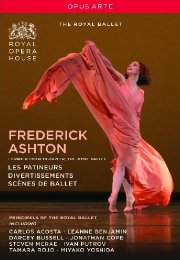

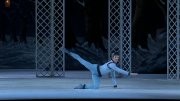
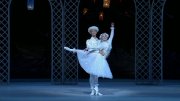
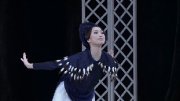

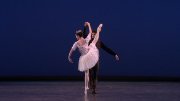
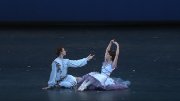
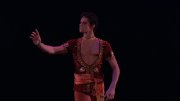
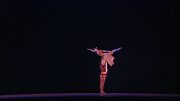
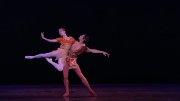
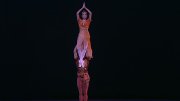
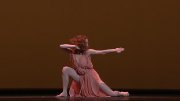
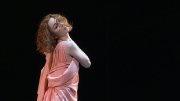
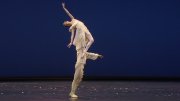
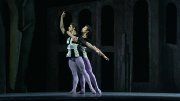
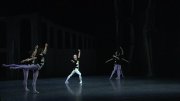
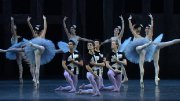
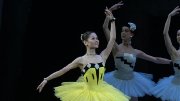
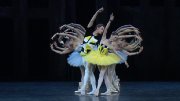
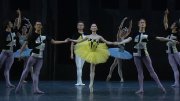

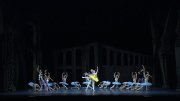






























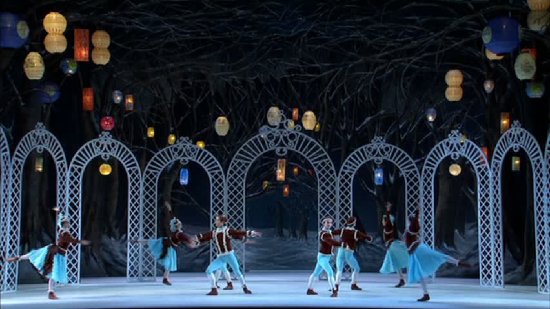












Your Opinions and Comments
Be the first to post a comment!